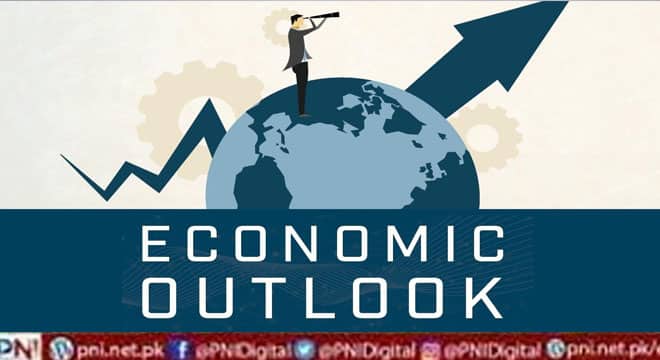ISLAMABAD, Jan 31 (APP):The Finance Ministry in its latest report on the state of the economy released here on Tuesday termed fiscal consolidation as the key to saving official reserves and exchange rate stability of the country.
According to the monthly Economic Update and Outlook for January 2023, released by the ministry, the fiscal consolidation may temporarily be costly in terms of growth prospects in the short term. However, long-run prosperity and growth could only be achieved by augmenting the country’s long-term equilibrium growth path by expanding production capacities and productivity.
It says, the first five months of the current fiscal year have ended with some developments; containing fiscal deficit and surplus in a primary balance due to effective fiscal management.
The report says, Pakistan was currently confronted with the challenges like high inflation, low growth, and low levels of official foreign exchange reserves.
Further Month-on-Month (MoM) increases in consumer prices may be countered by a further mean reverting international commodity prices and some exchange rate stability due to decreased pace of depreciation.
The overall money supply (M2) growth remains compatible with a return to low and stable inflation, says the report adding but the outlook of M2 is broadly dependent on fiscal accounts which are under immense pressure on account of heavy interest payments and rehabilitation spending.
According to the report, inflationary pressure was expected to calm down gradually due to flood-led damages which have disrupted the supply of essential items.
On the agricultural front, the wheat crop sowing is estimated at 21.48 million acres which is 94 percent of the target area of 22.85 million acres. The government’s pro-Agri initiatives are playing role in the revival of agriculture sector productivity.
On industrial activity, the report says, monetary tightening, import compression strategies, and recessionary global pressure continued to suppress the performance of the manufacturing sector since the beginning of the current fiscal year.
During July-November FY2023, the LSM witnessed a contraction of 3.6 percent against the growth of 7.2 percent same period last year. On Year-on-Year (basis), LSM plunged by 5.5 percent in November 2022, while over the previous month, it grew by 3.5 percent.
The fiscal deficit during July-November FY2023 has been contained to the same level of 1.4 percent of GDP as it was recorded in the comparable period last year. While the deficit of Rs 36 billion (-0.1 percent of GDP) last year.
The provisional net tax collection increased by 17.4 percent to Rs 3428.8 billion during July-December FY2023 against Rs 2919.9 billion in the same period last year. The increase in growth is largely attributed to a 49 percent growth in direct taxes.
The Current Account posted a deficit of $ 3.7 billion for Jul-Dec FY2023 as against a deficit of $ 9.1 billion last year, mainly due to a contraction in imports. However, the current account deficit shrank to $ 400 million in December 2022 as against $ 1857 million in the same period last year, largely reflecting an improvement in the trade balance.
Foreign direct investment (FDI) reached $ 460.9 million during July-December FY2023 ($ 1114.7 million last year) decreasing by 58.7 percent.
In July-December FY2023, workers’ remittances were recorded at $ 14.1 billion ($ 15.8 billion last year), which decreased by 11.1 percent. MoM basis, remittances decreased by 3.2 percent in December 2022 ($ 2.0 billion) as compared to November ($ 2.1 billion).
Pakistan’s total liquid foreign exchange reserves increased to $ 9.45 billion on January 24, 2022, with the SBP’s reserves now standing at $ 3.678 billion. Commercial banks’ reserves remained at $ 5.77 billion
The KSE-100 index closed at 40,420 points as of 30th December 2022 while market capitalization settled at Rs 6,501 billion, it adds.
Follow the PNI Facebook page for the latest news and updates.








